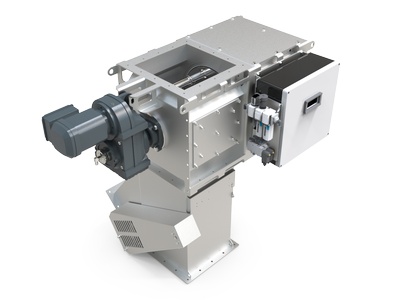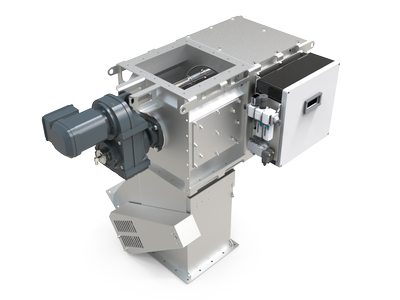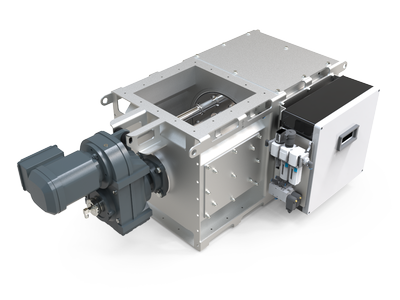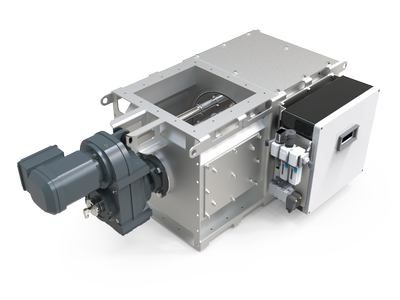Cleanflows - automatic discontinuously cleaning - Dust-proof - Rotating
This Cleanflow type is completely dust-proof. For magnetic filtering of small amounts of ferrous contaminants from poorly flowing - like fatty - powders in free-fall transport pipes. The rotation of the magnetic bars prevents bridging and blockages.
- Automatic cleaning (discontinuous)
- Rotor with magnetic bars
- Magnetic bars in pneumatic tube (Ø34 mm, 9400 gauss)
- Max. capacity 40 - 60 m³/h
- Atex II 3 D
Dusty, poorly flowing powders
The rotating, automatically cleaned Cleanflow magnets are very suitable for dusty and poorly flowing - like fatty - powders.
The automatic cleaning makes them also suitable for situations where the magnetic separator is hardly or not accessible for operation and cleaning.
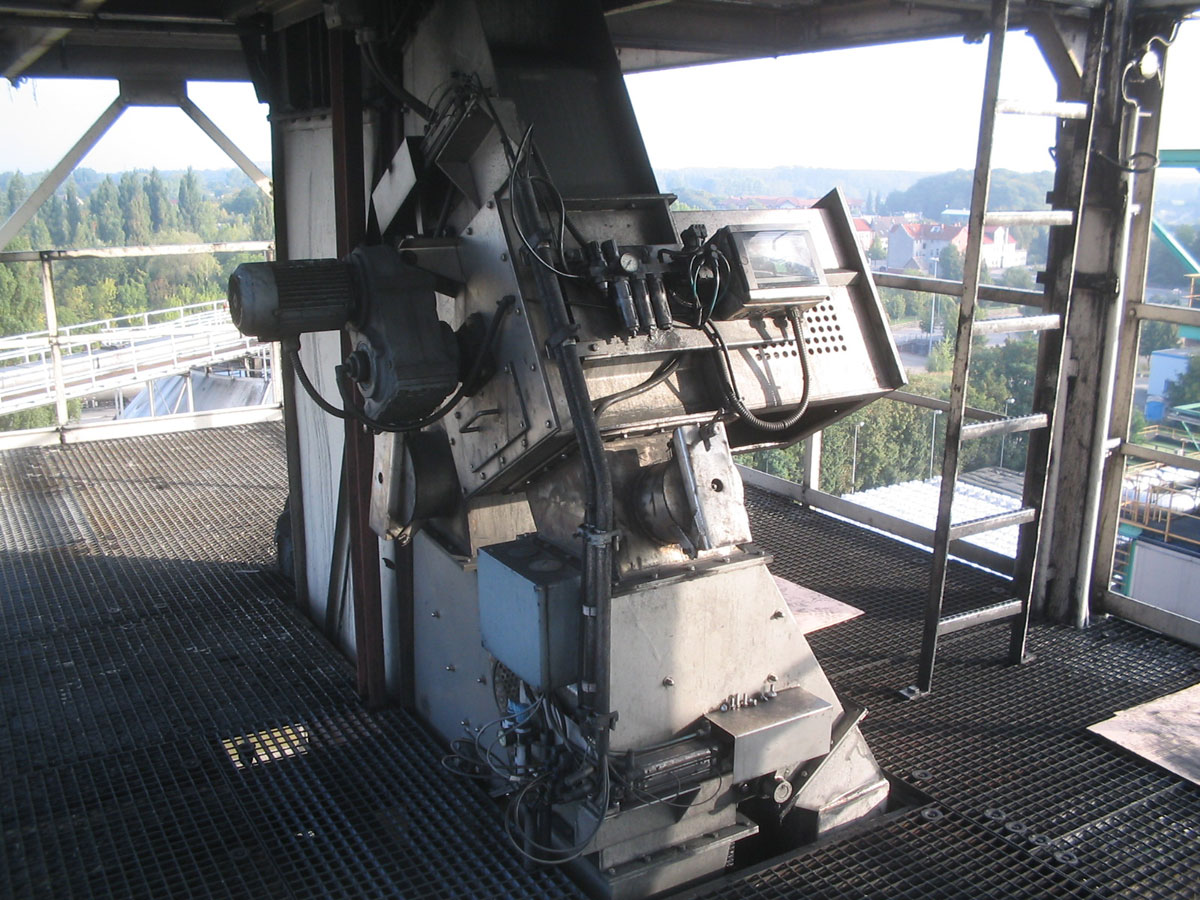
Construction & materials data
Click on a product variant to find the data sheet, drawings and other downloadable product information.
Short description
These completely dust-tight, rotary Cleanflow magnets contain a rotor with magnetic bars. The magnetic bars are Ø34 mm sealed stainless steel tubes inside of which very strong neodymium magnet bundles move pneumatically in and out.
Summary of important specifications
- Siemens LOGO control
- Ø34 mm pneumatic operated magnetic bars mounted in a rotor
- Pneumatic bar and valve movement
- Magnet quality: neodymium N-42, 9400 gauss on the Ø34 mm tube
- Material housing and rotor: AISI304 / AISI316L
- Finish: grit blasted
- Material gaskets/seals: NBR, EC1935 / FDA
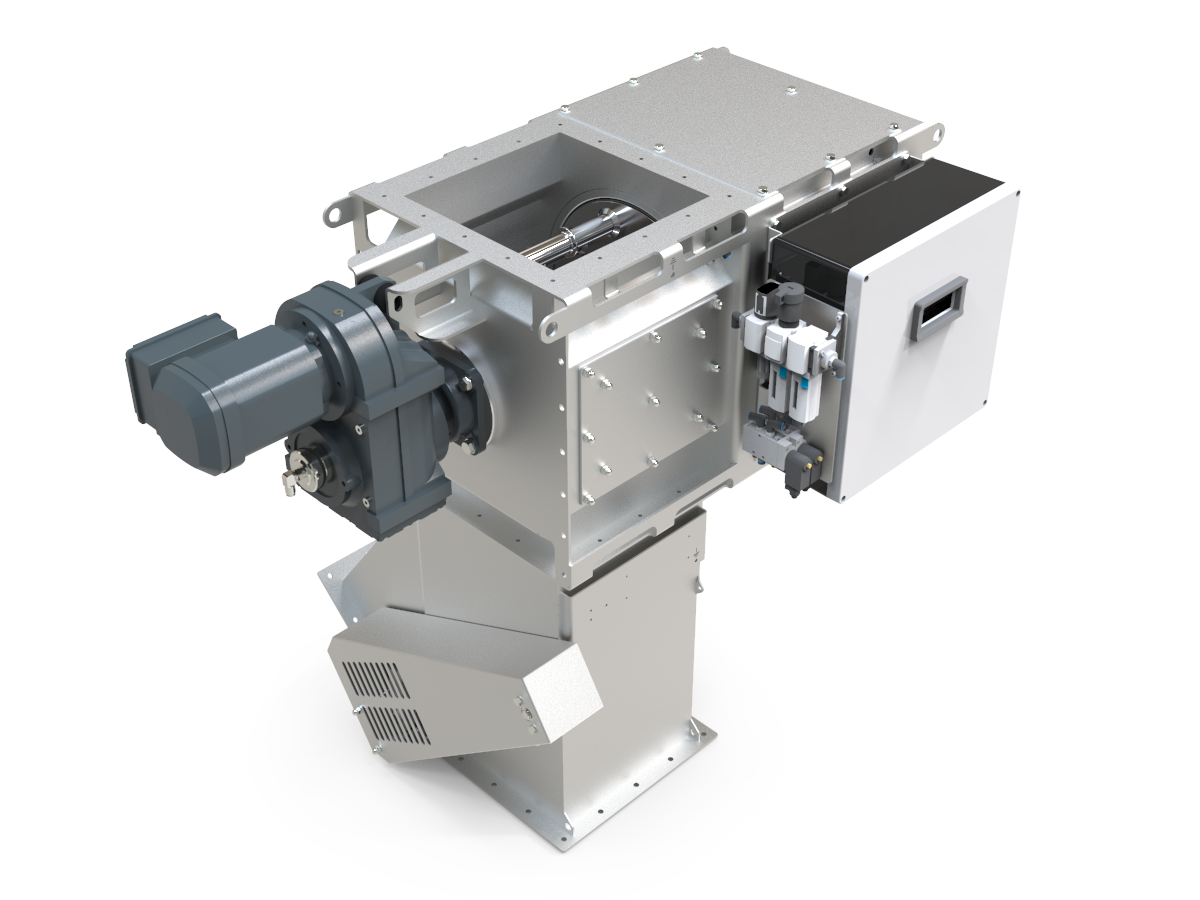
Online accessories & spare parts
Click on a product variant to find the online available accessories & spare parts.

Trapping & discharging of ferrous contaminants
Working principle
These automated cleaning Cleanflow magnets have a rotor with several pneumatically operated magnetic bars. Each magnetic bar has a magnet package that pneumatically moves inside an enclosing tube.
During a cleaning cycle, the magnet bundles are pneumatically moved out of the product channel. The moving magnets pull the captured ferrous particles along with them over the tube surface. However, they are stopped by the housing side plate halfway the tube length. As soon as the magnets are far enough out, the captured ferrous particles will fall into the product channel, after which the valve box ensures further discharge.
Cleaning sequence:
- Stop the product stream.
- Give start signal to the magnet's control unit.
- Now first the valve in the valve box is automatically switched to iron discharge position.
- Then the magnets inside the pneumatic tubes are moved automatically out of the product channel.
The captured metal particles want to 'travel' with the magnets, but are held by retainer rings on the magnet bar tubes. As soon as the magnets are out of reach, the captured particles automatically drop off of the tubes, into the valve box, where they are discharged further. - Then the magnets inside the pneumatic tubes are moved automatically back into the product channel.
- When the magnets are all back in, the valve will automatically be switched back to its production position.
- As soon as the magnets and valve are back in production position, the control will give a 'ready for production' signal.
- You can now safely resume production.

